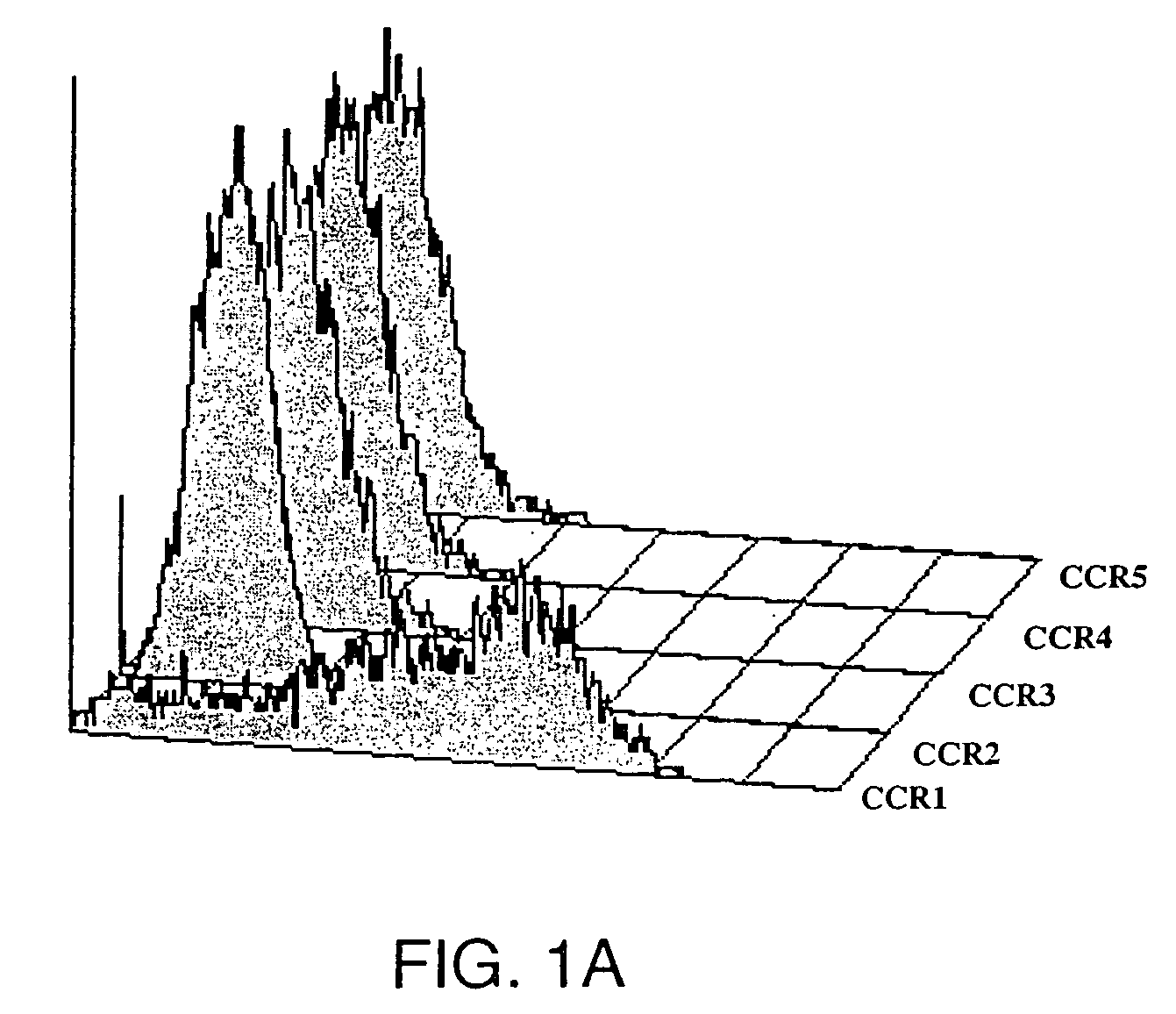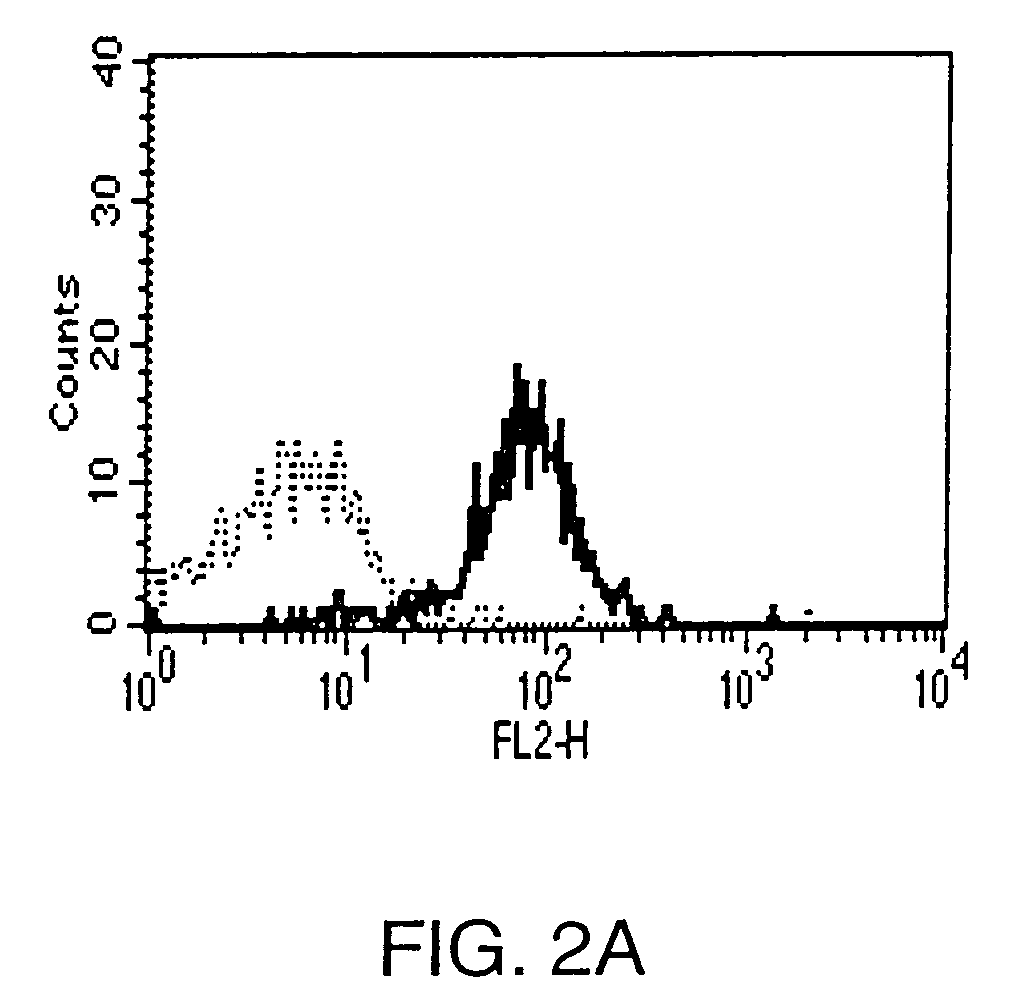Anti-CCR1 antibodies and methods of use thereof
a technology of anti-ccr1 and antibodies, which is applied in the field of anti-ccr1 antibodies, can solve the problems of difficult determination of relevance to initiation and progression of disease and the normal immune function of a specific receptor on a given cell type, and achieve the effect of low levels of ccr1
- Summary
- Abstract
- Description
- Claims
- Application Information
AI Technical Summary
Benefits of technology
Problems solved by technology
Method used
Image
Examples
examples
Methods
Cells, Cell Lines, and Tissue Culture
[0127]Normal human blood leukocytes were isolated as described (Heath et al., J. Clin. Invest. 99:178 (1997)). To generate CD3 blasts, 2×106 PBMC / ml in RPMI-1640 plus 10% FCS were added to tissue culture plates first coated with the anti-CD3 antibody TR66. After 4–6 days blasts were removed to fresh media and supplemented with IL-2 (kindly provided by Antonio Lanzavecchia, Basel Institute for Immunology, Basel, Switzerland) at 50 units / ml. In some cases, 10 ng / ml of IFNα (Peprotech, Rocky Hill, N.J.) was added to the cultures 4 days after stimulation.
[0128]Human CCR1 was expressed in the murine pre-B cell line L1–2 as described previously (Honda et al., J. Immunol. 152:4026 (1994)). In brief, primer sequences for the coding regions and 3′UTR of CCR1 were obtained from Genbank (accession number L09320) and the gene amplified by rt-PCR from human peripheral blood. The amplified product was directionally cloned into the expression vector pMRB...
PUM
 Login to View More
Login to View More Abstract
Description
Claims
Application Information
 Login to View More
Login to View More - R&D
- Intellectual Property
- Life Sciences
- Materials
- Tech Scout
- Unparalleled Data Quality
- Higher Quality Content
- 60% Fewer Hallucinations
Browse by: Latest US Patents, China's latest patents, Technical Efficacy Thesaurus, Application Domain, Technology Topic, Popular Technical Reports.
© 2025 PatSnap. All rights reserved.Legal|Privacy policy|Modern Slavery Act Transparency Statement|Sitemap|About US| Contact US: help@patsnap.com



